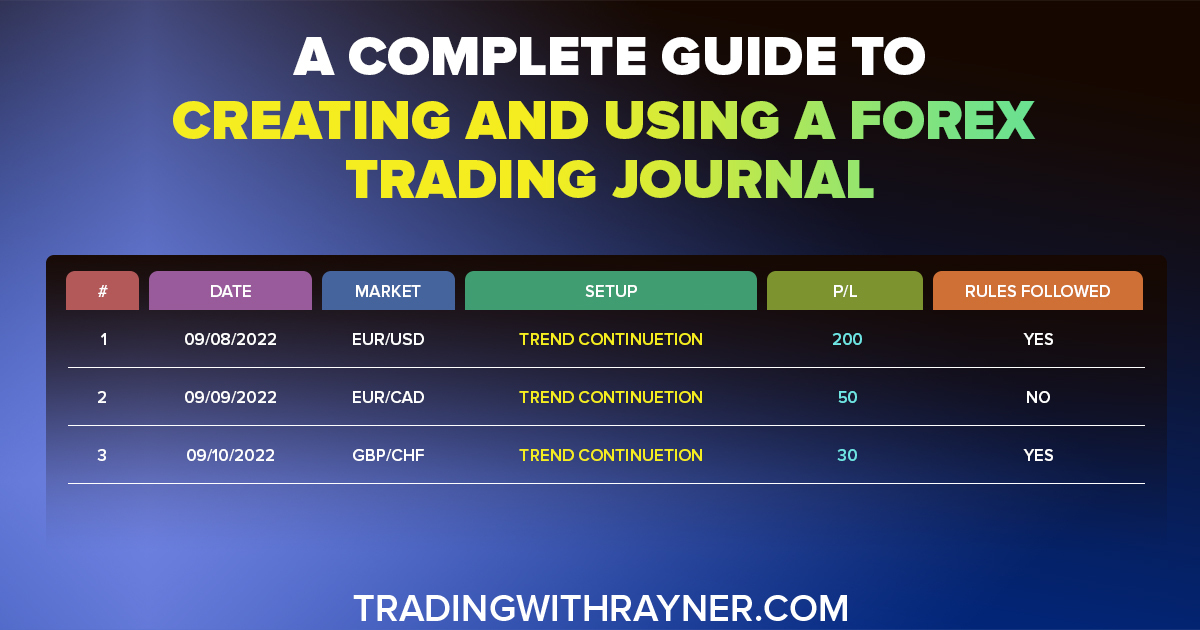📔 How to Journal Forex Trades: The Secret Weapon for Consistency
📘 Introduction: Why Journaling Makes You a Real Trader
In forex trading, consistency is everything, and journaling is the #1 habit of traders who achieve it.
Whether you’re using Smart Money Concepts, price action, or scalping gold, if you’re not journaling your trades, you’re missing the opportunity to:
-
Discover your strengths and weaknesses
-
Spot patterns in wins and losses
-
Improve discipline and remove emotion
-
Scale what works and eliminate what doesn’t
In this guide, you’ll learn how to set up a simple yet powerful forex trading journal, what to track, and how it can transform your trading results — even if you’re just starting.
🔎 1. What Is a Forex Trading Journal?
A forex journal is a log or document where you record every trade you take, including the setup, reasoning, entry/exit, emotions, outcome, and lessons.
Think of it as your trading mirror. It reflects:
-
What you did right
-
What you did wrong
-
What needs to change
Whether you’re a beginner or aiming to pass a prop firm, a journal will quickly reveal what’s holding you back (and how to fix it).
🧩 2. What to Include in a Forex Trade Journal
Here’s a simple table layout you can replicate in Excel, Notion, or Google Sheets:
| Entry # | Date/Time | Pair | Direction | Entry | SL | TP | Lot Size | R:R | Outcome | Notes |
|---|
For each trade, you should log:
-
Setup/Strategy Used (e.g., OB + CHoCH)
-
Timeframe
-
Why You Took It
-
Pre/Post-Trade Emotions
-
Mistakes or Lessons Learned
Bonus columns:
-
Screenshot of the chart before and after
-
“Mistake” checkbox
-
Confidence rating (1–10)
-
Screenshot URL (via TradingView)
🔢 3. How Journaling Creates Better Traders
✅ 1. Improves Discipline
When you know you’ll write it down later, you think twice before overtrading or taking impulse trades.
✅ 2. Increases Confidence
You start seeing your edge in action. This builds belief, especially during drawdowns.
✅ 3. Speeds Up Learning
Instead of repeating mistakes, you learn from them. Journals help you spot what’s working faster.
✅ 4. Helps You Pass Prop Firms
Many traders fail challenges due to repeated emotional mistakes. Journaling keeps you structured and accountable.
📸 4. Visual Journaling – Before/After Charting
Attaching annotated charts to your trades is powerful.
Use TradingView screenshots with:
-
Entry and SL/TP marked
-
Explanation (e.g., “Swept liquidity + CHoCH + retest OB”)
-
Post-trade review (Did it follow the plan? What could be better?)
📌 Tip: Save before AND after screenshots — not just winners.
🛠️ 5. Tools to Create a Forex Trade Journal
Here are simple tools to start journaling right now:
🔹 Notion (Free)
Create a custom journal with tables, charts, and screenshots
Great for mobile access and long-form notes
🔹 Excel or Google Sheets
Perfect for structured data and R:R analysis
Add formulas for totals, win rate, and average return
🔹 Edgewonk (Paid)
Advanced tracking with analytics, win-rate charts, and Monte Carlo simulations
Best for full-time or funded traders
🧠 6. Sample Entry: Real Trade Breakdown
Date: June 10, 2025
Pair: XAUUSD
Entry Timeframe: M15
Setup: Asian liquidity sweep → BOS → Retest of M15 OB
Entry: 2315.30 | SL: 2311.30 | TP: 2325.00
Lot Size: 0.10 | R:R: 1:2.5
Result: ✅ TP hit
Emotion: Calm and focused
Lesson: Patience paid off — waited for the structure shift
📌 Add this as a reference model for future gold trades.
🚫 7. Mistakes Traders Make With Journals
| Mistake | Why It Hurts |
|---|---|
| Only journaling winning trades | You learn more from losses |
| Not including emotional context | Emotions drive decisions |
| Journaling too vaguely | You can’t improve what you don’t understand |
| No screenshots | Visual memory is powerful in trading |
🎯 8. How Journaling Fits Into Your Daily Routine
Before Trading:
-
Review the previous day’s trades
-
Set intention (what setups are you waiting for?)
After Each Trade:
-
Log key data
-
Capture a chart screenshot
-
Rate emotional state
End of Week:
-
Review all trades
-
Categorize winners/losses by setup
-
Write a short “Weekly Lessons” summary
📘 How Blue Bull Forex Hub Helps You Journal Like a Pro
When you join our mentorship or course, you get:
-
🧾 Trade journal templates
-
🔎 Feedback on your entries from mentors
-
📊 Weekly trade reviews
-
✅ Accountability sessions to track your growth
-
🛠️ Trade journaling systems for prop firm prep
📍 Remember: Journaling doesn’t just track your progress — it creates it.
🔍 FAQs
Q: Is a trading journal necessary in forex?
A: Yes — it’s one of the fastest ways to build consistency and identify patterns.
Q: What’s the best format to journal trades?
A: A simple spreadsheet or Notion doc works great. Just be consistent and honest.
Q: How often should I review my journal?
A: Daily for new traders. Weekly summaries are great for pattern recognition.
Q: Can journaling help with trading psychology?
A: Absolutely. It helps spot emotional triggers and builds discipline over time.

